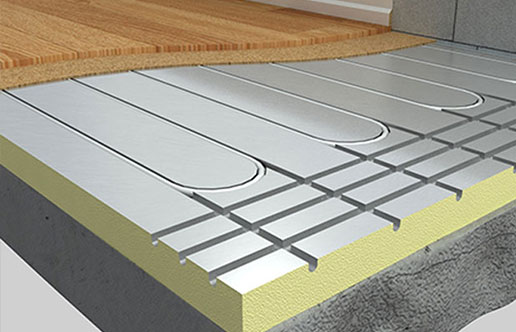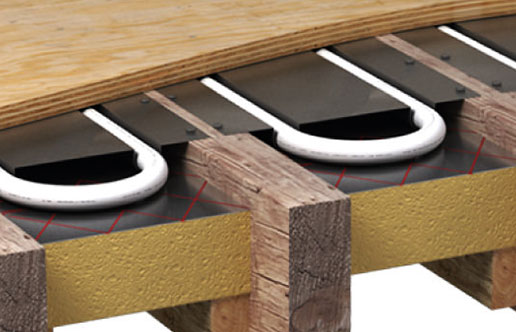- Unit 1A | 79 Tulnacross Road | Cookstown | BT80 9NP
Underfloor Heating
Underfloor heating is widely recognised by architects, consultants and engineers as being the most suitable solution for well-insulated modern homes. It provides higher levels of efficiency and control than conventional radiator systems. Underfloor heating is a system that uses pipes below the floor to circulate warm water producing a heat source capable of heating the air above it to any required temperature.
The Perfect Solution
Underfloor heating is widely recognised by architects, consultants and engineers as being the most suitable solution for well-insulated modern homes. It provides higher levels of efficiency and control than conventional radiator systems.
Comfort
Underfloor produces an even radiant heat throughout the room. Radiant heat transfers heat from a warm source (the floor) to a cold source (you). The entire floor radiates heat evenly giving ideal comfort levels.
Energy Savings
Reduced flow temperature, improved room control and the radiant heat all combine to offer savings over a conventional radiator system. With the advancement of heat pumps underfloor heating is the perfect solution and again increased efficiencies to a new level.
Health Benefits
The dryness of the floor deprives bacteria and dust mites of the moisture they need to survive, eliminating complications with allergies and asthma sufferers. The radiant heat removes the movement of dust particles associated with radiator systems.
No Cold Spots
As the whole floor is the heatsource there are no cold spots. Just an even ambient reliable heat in every part of room. Warm floor temperatures in the bathrooms & ensuites also reduce the “cold effect” normally associated with tiles.
Design Flexibility
With no radiators there is total freedom of design in terms of kitchen layouts and furniture. With modern builds having more glazing and less wall space this can be critical.
Minimal Maintenance
As the pipework is in the floor you do not need to paint or maintain radiators in the rooms as they begin to look more weathered. Radiators can also often be dust traps and places for rubbish to accumulate.
Room Control
Individual thermostat control ensures that each room is controlled by its own time and temperature program maximising efficiency and ensuring rooms are only heated to the temperatures required. Reducing overheating and unnecessary fuel usage.
4 Types of Flooring Systems
FloorTherm Underfloor Heating can provide solutions to any floor structure required to meet the needs of todays marketplace. Solid floor constructions are the most common in the new build market but the need for alternative solutions are becoming increasingly important in the retrofit market. Our in-house design department can provide a system to match the needs for each individual project, while ensuring the regulations of EN1264 are always adhered to.

Solid Floor Screed
Our most common and energy-efficient solution that features components designed to interweave. This solution creates the ideal foundation for a heating supply network for heat retention.

Floating Floor
Floating floor structures have become increasingly popular because they not only reduce the overall loading on the building, they also reduce sound transmissions throughout dwellings.

Aluminium Diffuser Plates
Joist floors do require a different approach to other flooring structures as the floor is not structurally capable of holding a screed. Instead, heat mass aluminium plates are fixed to joists.

Biscuit Mix Underfloor Heating
The dry “Biscuit Mix” underfloor heating gives extra thermal mass, reduces expansion and also reduces contraction noise which can be experienced as the floor heats and cools.


